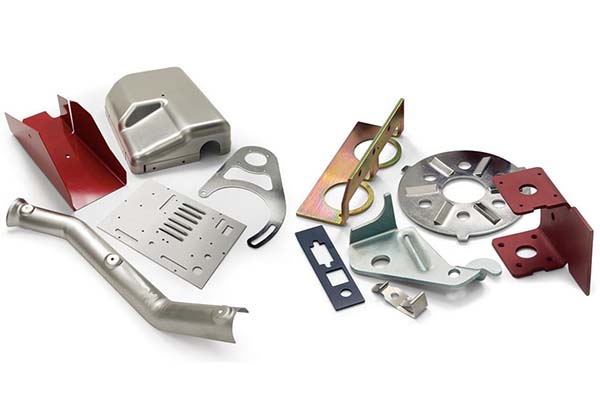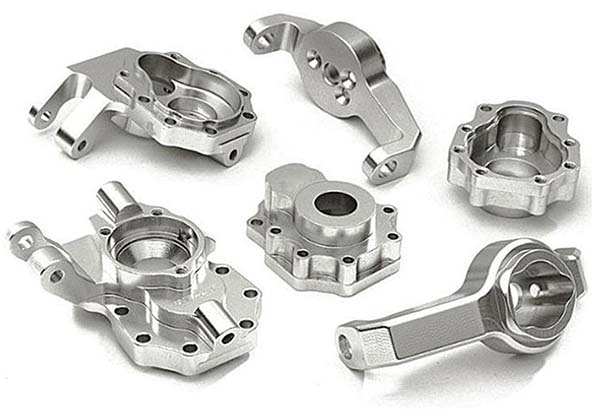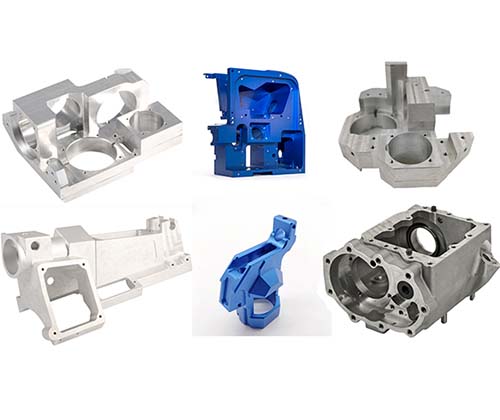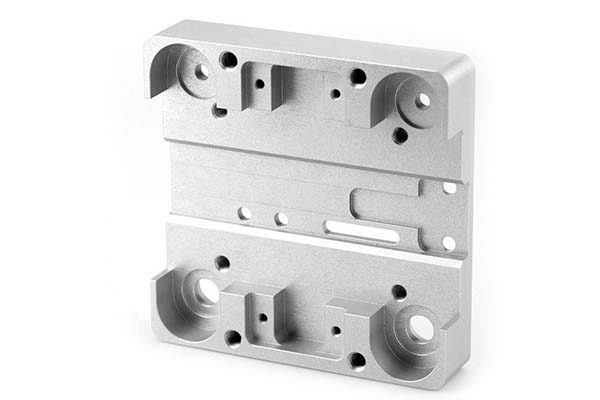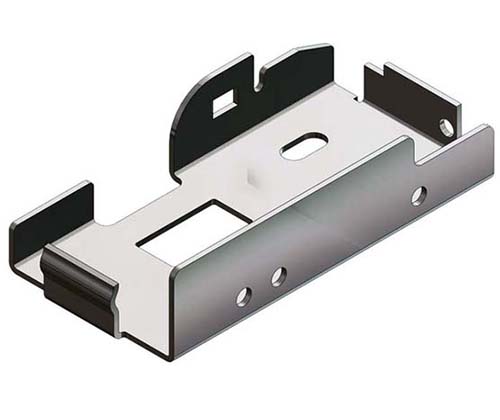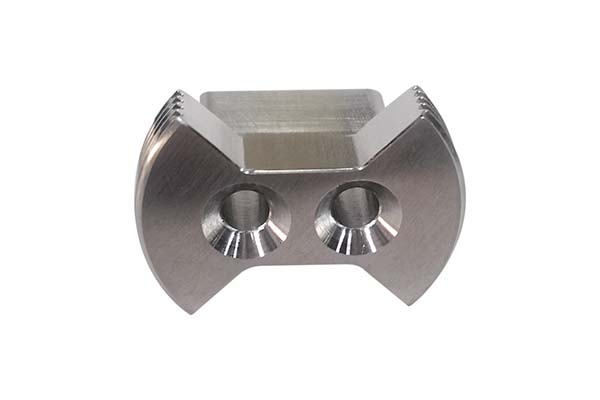Introduction
Definition and Basics of Cold Die Casting
Cold die casting, also known as cold chamber die casting, is a metal casting process that involves injecting molten metal into a mold cavity under high pressure. In this process, the molten metal is first poured into a separate shot chamber, and then a piston or plunger forces the metal into the die cavity at a high velocity. This high - pressure injection ensures that the molten metal fills the complex and detailed cavities of the die accurately, resulting in high - precision castings.
The die, which is typically made of high - strength steel, consists of two halves. One half is fixed, and the other is movable. Once the molten metal solidifies in the die cavity, the two halves of the die are separated, and the casting is ejected. This process can be repeated rapidly, making cold die casting an efficient method for mass production.
Importance in the Manufacturing Industry
Cold die casting holds a crucial position in the manufacturing industry due to several key advantages. Firstly, it offers high production efficiency. The high - pressure injection and quick solidification of the molten metal allow for a fast cycle time. For example, in the automotive industry, parts such as engine blocks, transmission cases, and wheels can be produced at a rate of several parts per minute, enabling large - scale production to meet market demands.
Secondly, cold die casting provides excellent dimensional accuracy. Castings produced through this process can achieve tight tolerances, often within ±0.05 - ±0.1 mm, depending on the complexity of the part. This high precision reduces the need for extensive post - processing operations, saving both time and cost. In the aerospace industry, where components need to fit precisely for optimal performance, cold die - cast parts can meet the stringent requirements without excessive machining.
Moreover, cold die casting can produce parts with complex geometries. The high - pressure injection allows the molten metal to flow into intricate cavities, creating parts with undercuts, thin walls, and fine details. This makes it possible to manufacture components that would be difficult or impossible to produce using other casting methods. In the electronics industry, for instance, cold die casting is used to create heat sinks with complex fin structures to enhance heat dissipation.
The Cold Die Casting Process in Detail
Step - by - Step Process Description
- Mold Preparation
- Design: The mold design is the first and crucial step. Engineers use computer - aided design (CAD) software to create a 3D model of the mold. This model takes into account the final shape of the casting, including all its intricate details, such as holes, grooves, and complex geometries. For example, if casting a complex automotive engine component, the mold design will precisely replicate the internal channels for coolant flow and the outer shape of the engine part.
- Manufacturing: High - strength steel is commonly used for mold manufacturing. The manufacturing process often involves precision machining techniques like computer - numerical - control (CNC) milling, electrical discharge machining (EDM), and grinding. These techniques ensure that the mold has the exact dimensions and surface finish required. After machining, the mold surfaces are polished to a very smooth finish to prevent the molten metal from adhering during the casting process.
- Pretreatment: Before use, the mold is preheated to a specific temperature, usually around 150 - 200°C. This preheating helps to reduce thermal shock when the molten metal is injected, preventing premature wear and cracking of the mold. Additionally, a release agent is applied to the mold surfaces. The release agent, such as a silicone - based spray, makes it easier to eject the casting from the mold after solidification.
- Metal Melting and Pouring
- Melting: The metal to be cast, such as aluminum, magnesium, or zinc alloys, is placed in a furnace. For aluminum alloys, the melting temperature typically ranges from 650 - 750°C, depending on the specific alloy composition. The melting process is carefully monitored to ensure that the metal reaches the correct temperature. Temperature sensors, like thermocouples, are used to measure the temperature accurately. The melting time can vary from 30 minutes to several hours, depending on the amount of metal being melted and the furnace's capacity.
- Pouring: Once the metal is molten, it is carefully poured into the cold - chamber shot sleeve. The amount of metal poured is precisely measured to ensure that the casting has the correct weight and dimensions. Pouring should be done smoothly to avoid splashing and introducing air bubbles into the metal, which could lead to defects in the final casting.
- High - Pressure Injection
- Principle: A hydraulic or mechanical plunger in the cold - chamber system forces the molten metal from the shot sleeve into the closed mold cavity at a high velocity. The pressure during injection can range from 20 - 150 MPa. This high - pressure injection allows the molten metal to quickly fill even the most complex and detailed parts of the mold cavity.
- Pressure Control: The injection pressure is carefully controlled to ensure consistent casting quality. Too low a pressure may result in incomplete filling of the mold, causing defects like short shots. On the other hand, too high a pressure can lead to flash (excess metal flowing out of the mold joints), increased porosity, and damage to the mold. Modern 压铸 machines use advanced control systems, such as programmable logic controllers (PLCs), to precisely regulate the injection pressure based on the part design and material properties.
- Impact on Casting Quality: Proper high - pressure injection ensures that the casting has good surface finish, high dimensional accuracy, and uniform density. It also helps in achieving thin - walled sections in the casting, which is crucial for applications where weight reduction is important, such as in the aerospace and automotive industries.
- Cooling and Solidification
- Process: After injection, the molten metal in the mold cavity begins to cool and solidify. The cooling rate can significantly affect the microstructure of the casting. A faster cooling rate, for example, when using metal molds with internal cooling channels, can result in finer grain structures. Finer grains generally lead to better mechanical properties, such as higher strength and hardness.
- Influence on Casting Structure: Slow cooling may cause the formation of larger grains and potential porosity due to the slower escape of gas bubbles. In contrast, rapid cooling can sometimes lead to the formation of internal stresses within the casting. These stresses, if not relieved properly, can cause the casting to crack during or after the ejection process. To optimize the cooling process, some molds are designed with cooling channels that circulate water or other cooling media to control the temperature gradient within the casting.
- Ejection and Finishing
- Ejection: Once the casting has solidified, the two halves of the mold are opened, and the casting is ejected using ejector pins. These pins are strategically placed in the mold to push the casting out without damaging it.
- Finishing: After ejection, the casting often requires post - processing. This may include removing any excess material, such as flash or the gate (the part of the casting that was connected to the injection system). Deburring tools, like rotary files or abrasive belts, are used to remove sharp edges and burrs. The casting may also undergo surface treatments, such as polishing, anodizing (for aluminum castings), or electroplating, to improve its appearance, corrosion resistance, and surface hardness.
Key Equipment and Their Functions
- Die casting machine: The core equipment in cold die casting. It provides the high - pressure force for injecting the molten metal into the mold. It consists of a clamping unit, which holds the two halves of the mold together during injection, and an injection unit, which includes the shot sleeve, plunger, and associated hydraulic or mechanical components for pushing the metal. For example, a large - scale industrial 压铸 machine can have a clamping force of several thousand tons, enabling the production of large - sized castings.
- Furnace: Used to melt the metal. Electric resistance furnaces or induction furnaces are commonly employed. The furnace must be able to reach and maintain the appropriate melting temperature for the specific metal alloy being used. It also needs to have a good insulation system to minimize heat loss and energy consumption.
- Mold: As mentioned before, the mold determines the shape of the casting. It is designed to withstand the high pressure and temperature during the casting process. Molds are often made of heat - resistant and wear - resistant steel alloys.
- Temperature and Pressure Sensors: These sensors are crucial for monitoring and controlling the process. Temperature sensors measure the temperature of the molten metal, the mold, and the casting during different stages. Pressure sensors monitor the injection pressure, ensuring that it stays within the optimal range for quality casting production.
Comparison with Other Casting Methods
Tabular Comparison
Cold die casting has distinct characteristics when compared with other common casting methods, such as sand casting and investment casting. The following table provides a clear comparison:
| Casting Method | Precision | Production Efficiency | Material Utilization | Applicable Alloys | Cost |
| Cold Die Casting | High | High | High | Multiple | Relatively high, but low long - term cost |
| Sand Casting | Low | Low | Low | Widespread | Low |
| Investment Casting | High | Low | Medium | Widespread | High |
Analysis of Differences
- Precision: Cold die casting offers high precision, with castings often achieving tight tolerances within ±0.05 - ±0.1 mm. This is due to the high - pressure injection of molten metal, which fills the mold cavity accurately. In contrast, sand casting has lower precision. The sand molds are less dimensionally stable, and the surface finish of sand - cast parts is generally rough, resulting in larger tolerances, usually in the range of ±0.5 - ±2 mm. Investment casting can achieve high precision similar to cold die casting, but it is often more suitable for small and intricate parts.
- Production Efficiency: Cold die casting has a high production efficiency. The rapid injection and solidification processes enable a short cycle time, making it ideal for mass production. For example, a well - equipped cold die - casting production line can produce hundreds or even thousands of parts per hour. Sand casting, on the other hand, has a low production efficiency. The process of making sand molds is time - consuming, and each mold can usually only be used once or a few times, resulting in a much longer production cycle. Investment casting also has a low production efficiency as it involves multiple steps such as wax pattern making, shell molding, and dewaxing, which limits its output.
- Material Utilization: Cold die casting has high material utilization. The high - pressure injection ensures that most of the molten metal is effectively used to form the casting, with minimal waste. In sand casting, material utilization is low. The complex shapes of sand molds often require excess material for support and gating systems, and there is a relatively high scrap rate due to defects. Investment casting has medium material utilization. Although it can produce complex shapes, some material is lost during the dewaxing and shell - making processes.
- Applicable Alloys: Cold die casting is suitable for a variety of alloys, including aluminum, magnesium, and zinc alloys, which are widely used in industries like automotive, aerospace, and electronics. Sand casting can be used for a wide range of metals, but it is often preferred for large - scale and less - precise applications, such as cast - iron pipes. Investment casting is applicable to a broad spectrum of alloys, especially for high - value and complex - shaped components in the aerospace and jewelry industries.
- Cost: The initial investment in cold die - casting equipment and molds is relatively high. However, in the long run, its high production efficiency and low scrap rate lead to lower unit - cost production, especially for large - volume production. Sand casting has a low initial cost as the equipment and sand molds are relatively inexpensive. But due to its low efficiency and high scrap rate, the overall cost may not be favorable for mass production. Investment casting has a high cost due to the complex process and the use of expensive materials like wax and high - quality refractory materials, making it suitable for high - value and small - batch production.
Applications of Cold Die Casting
Automotive Industry
Cold die casting is extensively used in the automotive industry. For engine components, such as engine blocks, the complex internal structures, including coolant passages and oil galleries, can be accurately formed through cold die casting. These passages are crucial for the proper functioning of the engine, ensuring efficient heat dissipation and lubrication. In the case of a V6 engine block, cold die casting allows for the creation of a single - piece structure with precisely placed internal channels, reducing the need for multiple assembled parts and enhancing the overall performance and reliability of the engine.
Transmission components also benefit greatly from cold die casting. Transmission cases, which house gears and other vital parts, require high - precision manufacturing. Cold die - cast transmission cases can achieve tight tolerances, ensuring smooth gear meshing and reduced noise during operation. Additionally, the high - strength alloys used in cold die casting for these components can withstand the high - torque forces generated during power transmission, contributing to the long - term durability of the transmission system.
Other Industries
In the aerospace industry, cold die casting is used to manufacture critical components. For example, aircraft engine components like turbine blades and compressor casings are made through cold die casting. These components need to have high strength - to - weight ratios to improve the fuel efficiency and performance of the aircraft. Cold die casting enables the use of lightweight alloys, such as aluminum - lithium alloys, while maintaining the required strength and precision. The complex aerodynamic shapes of turbine blades can be accurately replicated through cold die casting, ensuring efficient energy conversion within the engine.
In the medical device industry, cold die casting is utilized for manufacturing surgical instruments and some implantable devices. Surgical instruments, such as forceps and scalpels, require high - strength and corrosion - resistant materials. Cold die - cast titanium alloys can meet these requirements, providing instruments that are durable and easy to sterilize. For implantable devices, like orthopedic implants, cold die casting allows for the production of complex shapes that can better match the natural anatomy of the human body, promoting better integration and functionality after implantation.
Yigu Technology's View
As a non - standard plastic metal products custom Supplier, Yigu Technology highly values cold die casting for its versatility and precision. Cold die casting allows us to produce customized metal components with complex geometries and tight tolerances, meeting the unique requirements of our clients across various industries.
The high - pressure injection in cold die casting ensures excellent dimensional accuracy, which is crucial for our non - standard products. We have extensive experience in using this process to create parts that fit seamlessly into our clients' systems. Additionally, the high production efficiency of cold die casting enables us to meet tight deadlines and handle large - scale custom orders. Our team is well - versed in every step of the cold die - casting process, from mold design to post - processing, ensuring high - quality results for our customers.
FAQs
What types of alloys are most suitable for cold die casting?
Aluminum, magnesium, and zinc alloys are highly suitable for cold die casting. Aluminum alloys, for example, are popular due to their low density (about one - third that of iron, copper, or zinc), high strength - to - weight ratio, excellent thermal and electrical conductivity, and good corrosion resistance. They are widely used in automotive, aerospace, and electronics industries. Magnesium alloys are known for their lightweight nature (about 64% the density of aluminum), high specific strength, and good vibration - damping properties, making them ideal for applications where weight reduction is crucial, such as in the automotive and aerospace sectors. Zinc alloys have excellent casting properties, including a low melting point (around 385°C), which allows for easy casting of complex and thin - walled parts. They also have good mechanical properties and can be easily electroplated for better surface finish and corrosion protection, commonly used in the electronics, hardware, and toy industries.
How can we ensure the quality of cold die - cast products?
To ensure the quality of cold die - cast products, several steps are crucial. First, precise control of process parameters is essential. This includes maintaining the correct melting temperature of the metal (for aluminum alloys, usually 650 - 750°C), accurate injection pressure (ranging from 20 - 150 MPa), and proper cooling rate. A well - designed mold is also vital. The mold should be made of high - quality materials, have precise dimensions, and be properly preheated and coated with a release agent before use. Regular inspection and maintenance of the mold can prevent defects caused by mold wear or damage. Additionally, quality control during the production process, such as using non - destructive testing methods like X - ray inspection to detect internal defects in the castings, and dimensional inspection to ensure the parts meet the required tolerances, helps to guarantee the overall quality of the cold die - cast products.
What are the common defects in cold die casting and how to solve them?
Common defects in cold die casting include porosity (both gas porosity and shrinkage porosity), surface defects like blisters and cold shuts, and dimensional inaccuracies. Gas porosity is often caused by air trapped during the injection process. To solve this, proper venting of the mold should be ensured, and the injection speed and pressure can be adjusted to minimize air entrapment. Shrinkage porosity occurs when the metal shrinks during solidification. This can be addressed by optimizing the gating system to ensure uniform filling and by using proper risers to feed the molten metal during solidification. Surface blisters may be due to moisture in the mold or improper release agent application. Keeping the mold dry and using the correct amount and type of release agent can prevent this. Cold shuts happen when the molten metal streams do not fuse properly. Adjusting the injection speed, temperature, and pressure can solve this problem. Dimensional inaccuracies can be corrected by ensuring the mold is well - maintained, and the process parameters are stable.

